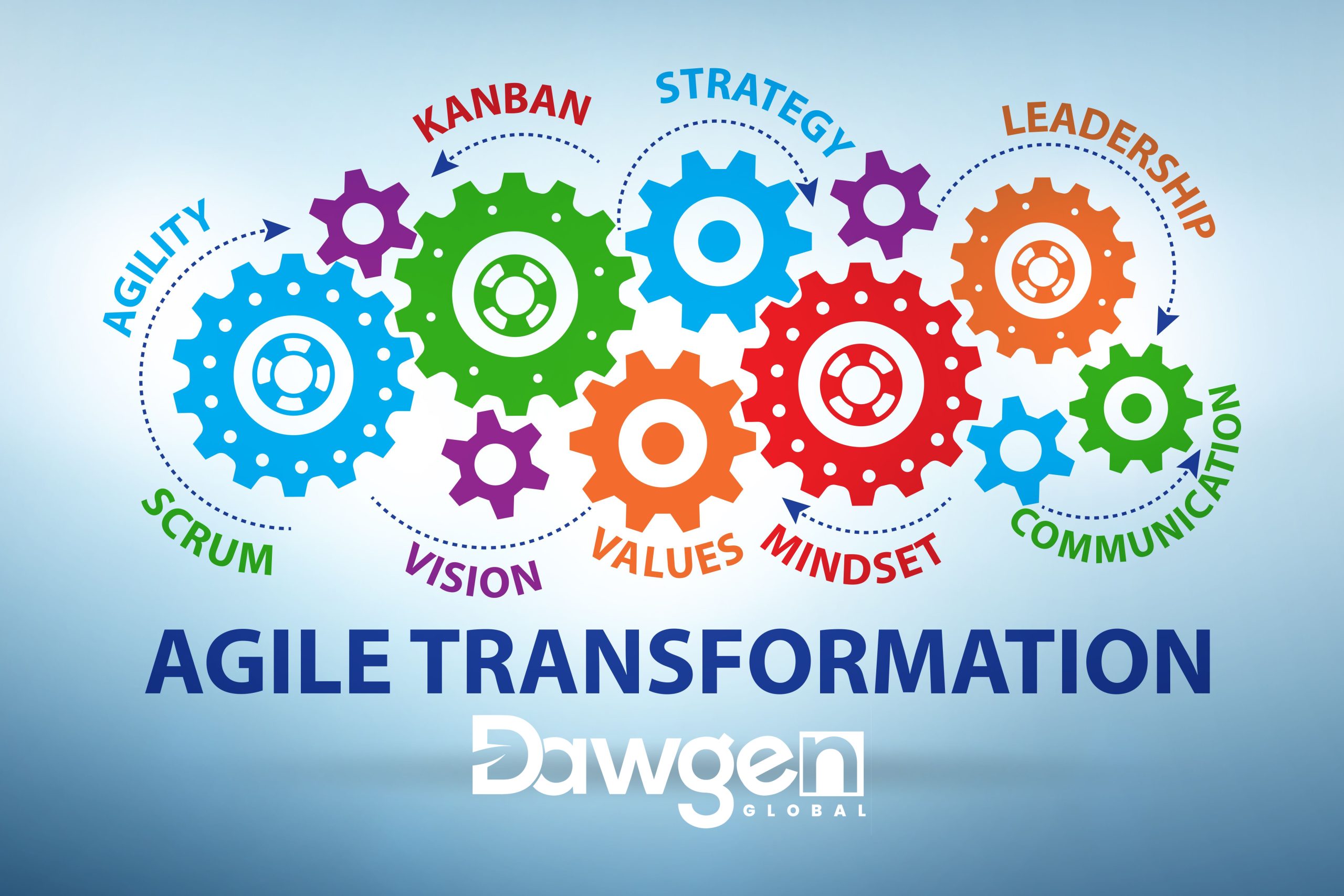
In today’s rapidly evolving business landscape, agility is no longer a luxury but a necessity. As companies strive to remain competitive and responsive to changing market dynamics, the shift towards Agile methodologies has become imperative. This transformation, however, isn’t merely about adopting new processes; it’s about a fundamental change in organizational and managerial thinking. Dr. Dawkins Brown, the Executive Chairman of Dawgen Global, aptly encapsulates this sentiment: “In the realm of change, agility is the new currency. The future belongs to those who can transform, adapt, and implement rapidly.”
The Organizational Paradigm Shift
The first step in this transformative journey is the organizational paradigm shift. Traditional organizations are often characterized by rigid structures, siloed departments, and a top-down approach to decision-making. In contrast, an Agile organization is fluid, collaborative, and responsive. This shift demands a new way of thinking where adaptability, customer-centricity, and continuous improvement become the core values driving the organization.
The Agile Mindset Shift
Hand in hand with the organizational shift is the need for an Agile mindset. This mindset is not confined to the management alone; it must permeate every level of the organization. It’s about embracing change as an opportunity, not a threat. An Agile mindset values collaboration over hierarchy, flexibility over rigid planning, and responsiveness over adherence to plans. As managers transition into Agile leaders, they must champion this mindset, fostering an environment where experimentation, learning from failures, and iterative progress are celebrated.
The Dynamic Matrix Structure of an Agile Organization
Agility thrives in environments that are less hierarchical and more networked. The dynamic matrix structure of an Agile organization facilitates this by promoting cross-functional collaboration. Teams are organized around projects (or ‘squads’) rather than departments, with fluid roles and responsibilities that adapt to the needs of each project. This structure not only enhances flexibility but also accelerates decision-making and innovation, as it brings together diverse perspectives and skills.
The Agile Management Roles
In this new landscape, traditional managers are repositioned into three pivotal roles: the Chapter Leader, the Tribe Leader, and the Squad Leader. Each role demands distinct skills and a deep understanding of Agile principles.
1. The Chapter Leader
Chapter Leaders are akin to skill-based mentors. They oversee a group of individuals (the ‘chapter’) with similar skills or functions across various projects. Their role is to ensure the development and sharing of best practices, fostering a culture of continuous learning and skill enhancement. The challenge for Chapter Leaders is to balance skill development with project needs, ensuring that team members are both growing and contributing effectively.
2. The Tribe Leader
Tribe Leaders are responsible for a larger segment of the organization, often overseeing several squads. They play a strategic role, ensuring that each squad aligns with the broader organizational goals. Their challenge lies in maintaining a balance between providing strategic direction and allowing squads the autonomy to innovate and adapt as they see fit.
3. The Squad Leader
Squad Leaders are at the forefront of Agile transformation. They lead cross-functional teams on specific projects, focusing on delivering value quickly and efficiently. The Squad Leader’s challenge is to foster a collaborative and empowered team environment while ensuring timely and effective delivery of project goals.
The transition to an Agile organization is not a mere change in processes; it is a fundamental shift in how we view and manage work. Traditional managers, in their new roles as Chapter, Tribe, and Squad Leaders, are at the heart of this transformation. By embracing the Agile mindset and adapting to these new roles, they enable organizations to navigate the turbulent waters of change, not just surviving but thriving in the face of continuous change. As Dr. Dawkins Brown rightly points out, agility is the new currency in this dynamic world of business.
Next Step!
“Embrace BIG FIRM capabilities without the big firm price at Dawgen Global, your committed partner in carving a pathway to continual progress in the vibrant Caribbean region. Our integrated, multidisciplinary approach is finely tuned to address the unique intricacies and lucrative prospects that the region has to offer. Offering a rich array of services, including audit, accounting, tax, IT, HR, risk management, and more, we facilitate smarter and more effective decisions that set the stage for unprecedented triumphs. Let’s collaborate and craft a future where every decision is a steppingstone to greater success. Reach out to explore a partnership that promises not just growth but a future beaming with opportunities and achievements.
✉️ Email: [email protected] 🌐 Visit: Dawgen Global Website
📞 Caribbean Office: +1 876 926 5210 📲 WhatsApp Global: +1 876 493 4923
Join hands with DawgenGlobal. Together, let’s venture into a future brimming with opportunities and achievements.

